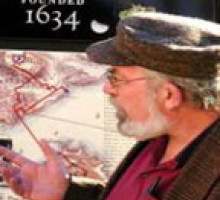
Reviews
An outstanding study of a neglected topic.
In recent decades, such ethnic groups as Italians, African-Americans and Chinese have rightfully demanded recognition for their share in building America in the days of the Industrial Revolution. Horses clearly did as much but had no one to speak in their behalf. Now they do.
Overall, McShane and Tarr have written an outstanding and highly creative book. It should interest historians of cities, the environment, economics and animals.
Presents a rich and complex picture of nineteenth-century urban life. McShane and Tarr have given us a book that is simultaneously an urban social history, a social history of a technology, and an environmental history.
The growth and development of the 19th-century city would have been vastly different without the horse, even though the horse's role was taken for granted by city residents and ignored by historians.
Valuable contribution not only to urban history but also to nineteeth-century economic, business, environmental, and social history.
A brilliant account of an incredibly important but understudied topic.
McShane and Tarr's book, mercifully free of academic argot, a pleasure to read and full of enjoyable and surprising revelations, is welcome. And, if you'll forgive the metaphor, it covers the ground well.
Their work will no doubt encourage many scholars to reevaluate what they know about the physical formation of U.S. cities and what was going on in them.
A deeply researched exploration of the intimate relationships among horses, humans, urbanization, industrialization, and reform.
Taken together the horse and the growth of the city fill an interesting and useful history of America. This ride is highly recommended.
A valuable addition to the growing discussion of animals in history... the reader is left with a greater appreciation of the horse as an active participant in American history.
It should be required reading for anyone interested in the environmental history of urban life in the eighteenth and nineteenth centuries.
A fascinating story of the 'Gelded' Age.
A fascinating account of the role of horses in shaping the economy and society of American cities during the nineteenth century that contributes greatly to the fields of urban history, environmental history, and the history of human-animal relationships.
In this careful and richly textured book, Clay McShane and Joel Tarr have shown us how these beasts of burden helped create the modern metropolis and then disappeared from the city streets.
This innovative and fascinating book goes to the heart of new research that connects the human and animal worlds as never before. In presenting the horse as a ‘living machine,’ McShane and Tarr help us rethink how cities were built and how they functioned in the past.
Book Details
Preface
Introduction: Thinking about Horses
1. Markets: The Urban Horse as a Commodity
2. Regulation: Controlling Horses and Their Humans
3. Powering Urban Transit
4. The Horse and Leisure: Serving the
Preface
Introduction: Thinking about Horses
1. Markets: The Urban Horse as a Commodity
2. Regulation: Controlling Horses and Their Humans
3. Powering Urban Transit
4. The Horse and Leisure: Serving the Needs of Different Urban Social Groups
5. Stables and the Built Environment
6. Nutrition: Feeding the Urban Horse
7. Health: Equine Disease and Mortality
8. The Decline and Persistence of the Urban Horse
Epilogue: The Horse, the Car, and the City
Notes
Index






